Local veterinarians are ‘overworked and overwhelmed’
Sussex County. Too many pets, not enough time: nineteen months into the pandemic, local veterinarians still struggle to treat all comers amid a surge in demand.
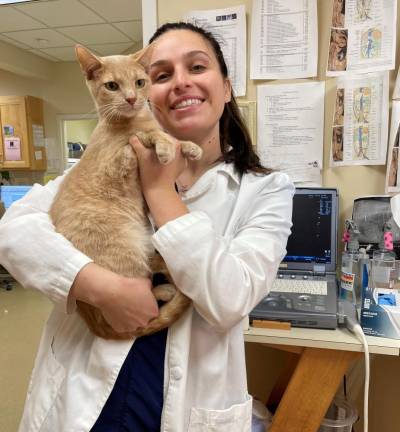
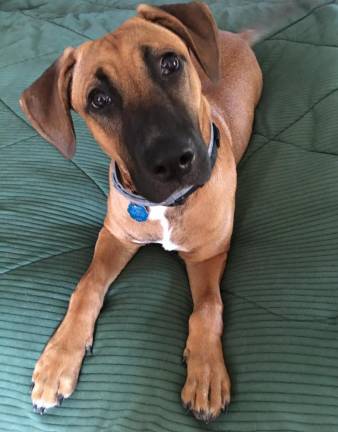
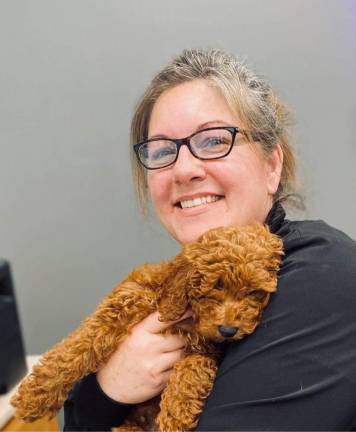
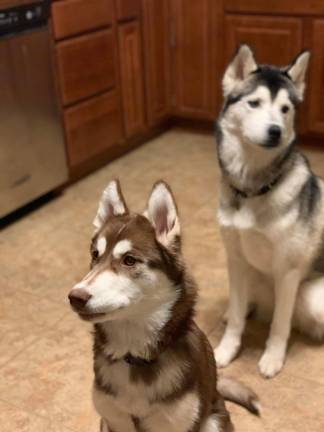
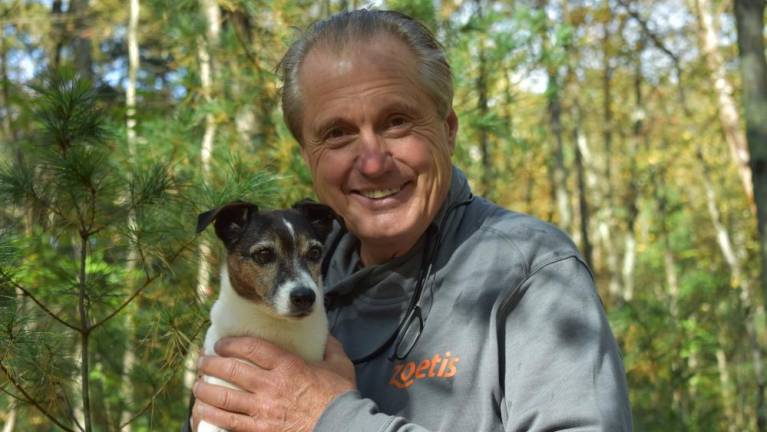
Franklin, N.J., resident Lisa Kisch adopted her hound mix, Rosie, from a kill shelter last spring, she said, “not realizing that everybody and their brother was doing the same thing.”
Rosie came home chipped and up-to-date on shots, but she has not been spayed yet. On Sept. 17, Kisch asked to schedule an appointment, hoping to get the procedure done at some point the following month, when Rosie was six months old.
She was given the soonest slot available: Dec. 7.
“I was floored,” said Kisch. “I said ‘Are you kidding me?’ and the receptionist said, ‘No, we are booked.’”
And though she’s worried that her dog will go into heat before the appointment comes, Kisch is waiting it out. She wants to stick with her veterinarian, and she knows hers isn’t the only one with delays.
The vet she used to see was running an hour and a half behind schedule last summer.
Rosie also needs to go to the dentist for an underbite. The specialist Kisch was referred to is booked out for a month - and that’s just for the initial consultation.
“They’re overwhelmed,” she said.
Pandemic dogs
In our reader survey of more than 450 local pet owners, 35 percent of respondents said they got a new pet within the last 18 months.
“We have been busy because there’s so many people who have decided they wanted a pet,” said Dr. Carol Ose-Diehl, veterinarian and business owner of The Highlands Veterinary Hospital in Sparta, N.J.
Between the surge in new residents from urban areas, and those with summer homes deciding to stay put year-round, “there’s this mass influx of people,” she said. People with cats, dogs, birds.
“The industry is exploding,” said Dr. Ted Spinks, owner and lead veterinarian at The Animal Hospital of Sussex County. “I think there’s 18 million new pet owners in the United States. We’re a $150 billion industry. Three years ago, I think we were at $54 (billion). So it’s tripled.”
The Animal Hospital of Sussex County is a larger facility than most local vet operations, with seven veterinarians on staff and one on call each day for emergencies. The practice has been getting a lot of the overflow from others, said Spinks. They’re “able to handle the caseload at this point,” he said, but well visits are still booking two or three weeks out.
Spinks estimates his client base has increased between 35 and 40 percent. Ose-Diehl estimated that her practice is about 25-30 percent busier now than it was in 2019.
Backlog upon backlog
While the wave of pandemic puppies is real, it’s just one of many factors fueling the increased demand for appointments.
Melissa Maher, the office manager at Veterinary Center of Hardyston, N.J., saw the surge in new pets start to slow this past spring.
But the backlog was already piling up. Covid-related safety protocols shortened the number of available appointments each day, since they needed extra time to escort curbside pups between car and clinic, and to sanitize the clinic between visits.
“Where you could have maybe fit in two appointments, you can only do one,” said Maher. She said Veterinary Center of Hardyston went “back to normal” and stopped curbside service in June.
And when those restrictions started to lift, pet owners started to make the appointments they put off during the height of the pandemic. Some wanted to avoid exposure, while others didn’t want to drop their pups off for curbside service.
“When you have anxious pets, scared pets whose parents cannot accompany them inside, they end up missing wellness checks,” said one anonymous survey respondent.
This sudden increase in demand came when veterinarians were already at or close to capacity.
The work from home factor
Pet parents who are now working from home are spending more time than ever with their four-legged friends, and noticing ailments they might have missed if they were in the office 40 hours a week.
Before, pet owners might have heard their dog cough once at night, said Ose-Diehl. “But now they’re home all day watching the dog cough five times, when it was always coughing five times, but they didn’t see it during the day,” she said.
Maher is seeing the same trend. “We have the surge now of existing clients who are home and noticing things wrong,” she said.
Patience, patients
Seventeen percent of survey respondents said they’ve had trouble getting an appointment within the past 18 months.
Highland Lakes resident Christina Canning, a mom to Siberian huskies Thor and Izzy, was disheartened when she made an appointment for one of her dogs — and was told when she showed up that it was never booked. Her vet squeezed them in, apologizing and attributing the mistake to new staff and an overwhelming number of new patients.
Seeing the dropped appointment as a red flag, Canning took Izzy to a different vet for her puppy shots. But then a month later, Canning discovered a lump on Izzy’s leg. When she tried to make an appointment to have it looked at, the new office couldn’t see the pup for nearly a month. Canning went back to her original veterinarian, who gave her an appointment within the week.
“I feel like I’m going vet to vet playing ‘Who’s gonna see me first?’” she said.
Both Ose-Diehl and Maher acknowledged that two years ago, it was easy to be seen right away.
“They’re used to getting in the same day, or the next day, for any kind of appointment,” said Maher. “And they’re getting upset because practices are four, five, six weeks out booking. All of us are. And so they’re getting frustrated.”
‘Overworked and overwhelmed’
Maher has been working in the pet world for more than 30 years. She loves animals, but says the clients are her favorite part of the job.
“I love my customers. I just love our clients,” she said.
But lately, pet owners are getting impatient — and taking out frustrations on vets and their staff. They are unleashing over the phone, or taking to social media to complain.
Clients have told Maher “I guess you’re okay with my pet dying” in response to her office being unable to see them right away. This has happened on at least five occasions since the practice opened in September 2020.
“And it’s not that we don’t want to see the pet, believe me – if we could see all of them, we would,” she said. “But there’s only so many hours in a day, and we’re trying to service as many people as we can.”
Ose-Diehl agrees. “The general public has less filters,” she said. “It’s become a much more stressful world that we live in.”
She’s working hard to stay positive, despite the long hours. “We’re working through our lunch, we’re working through our dinner,” she said. “We’re overworked and overwhelmed.”
She said veterinarians and their staff don’t do their work for the money. “We do it because we love it,” she said. “People need to remember that. We’re really doing the best we can, and we do care.”
The surge in demand, coupled with a lack of empathy from clients, is making a stressful, emotional job even harder. A 2018 study by the American Veterinary Medical Association and U.S. Centers for Disease Control (CDC) showed that female veterinarians are 3.5 times as likely, and male vets are 2.1 times as likely, to die by suicide. The pre-pandemic study attributed the heightened risk to poor work-life balance, ever-increasing student debt, long hours, work overload, and access to animal euthanasia solution.
“It’s hard, you know,” said Maher. “There’s a lot of burnout in the vet practice. The technicians, they’re working their rears off. The hardest part, I think, for people who are dealing with the front end office – is customers can be pretty rude. And I get why they’re doing it. They can’t accept that we’re weeks out on end. It’s hard and it’s sad.”
“We’re sad about it,” she said. “We’re sad that we can’t do more.”
“I feel like I’m going vet to vet playing ‘Who’s gonna see me first?’” Christina Canning